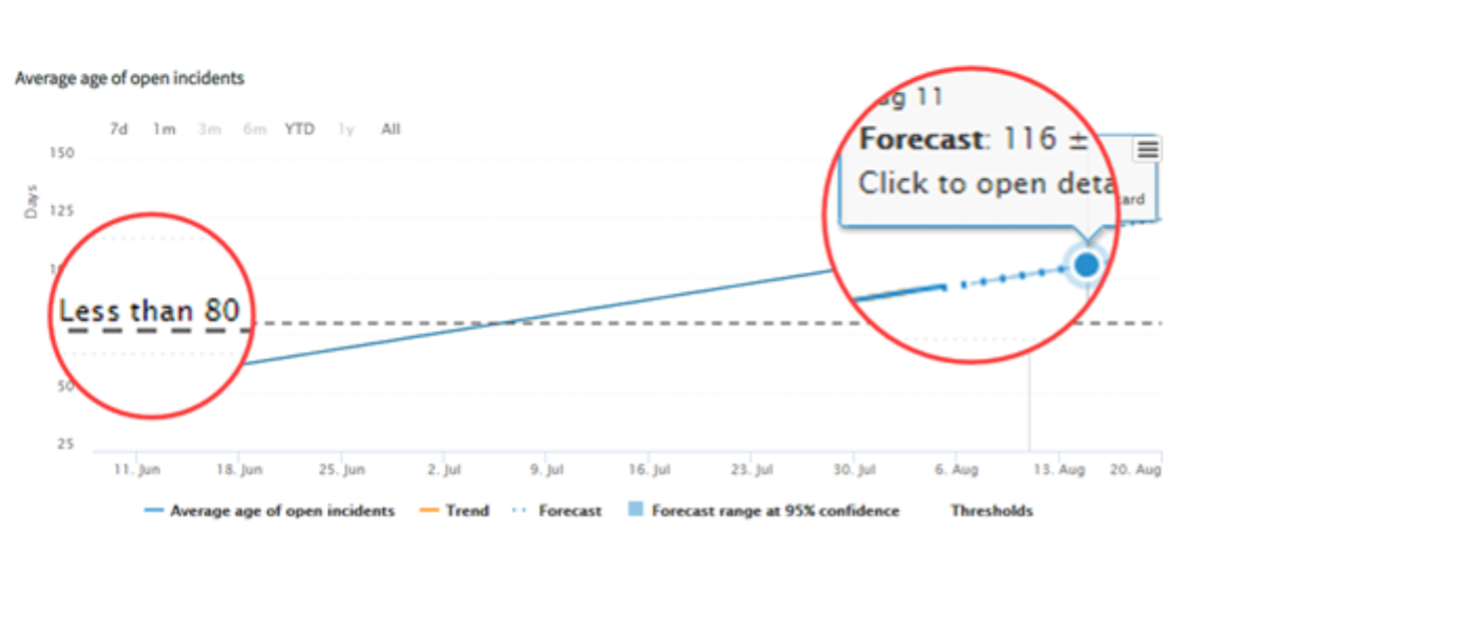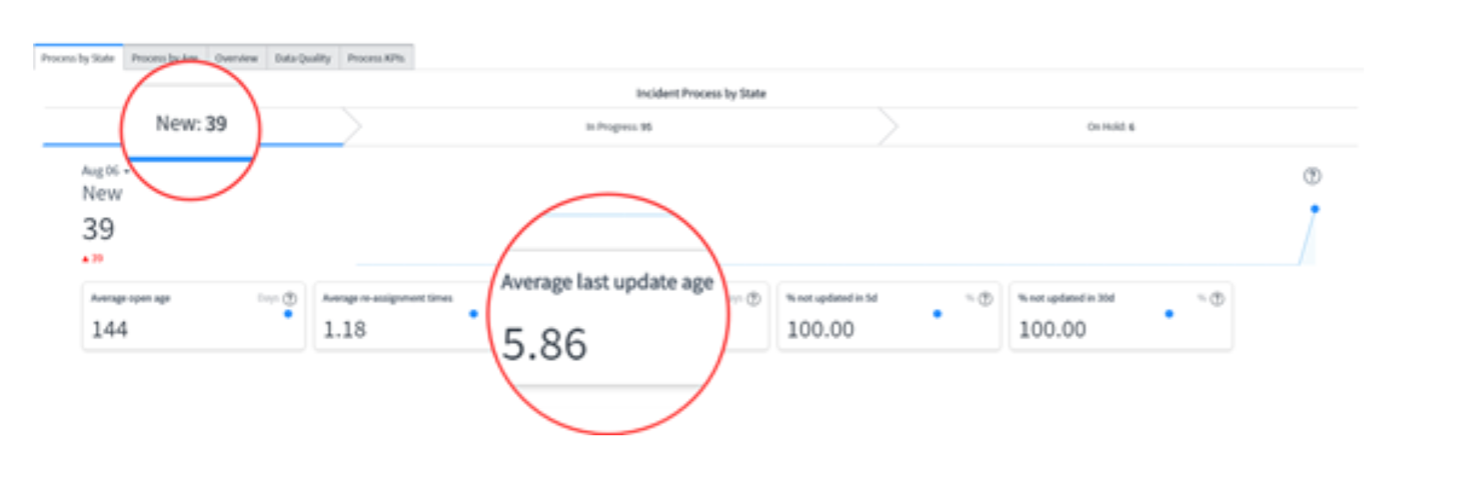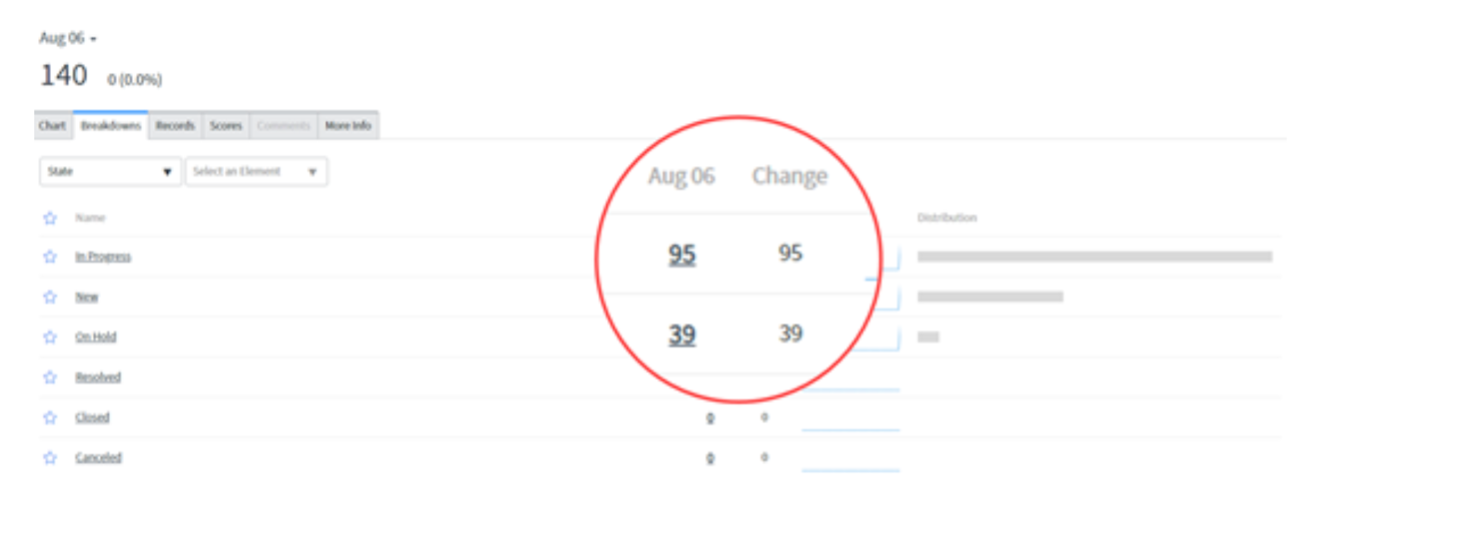Improve your business with ServiceNow Performance Analytics.
Benefits of ServiceNow Performance Analytics:
-
Trend discovery
-
Helps you remove bottlenecks
-
Identify areas of improvement
-
Identify which areas are ready for self-service
-
Hit the sweetspot between company strategy, user satisfaction and operational costsStrengthened system integrity
Some day in the meeting room...
"How can we lower the cost and increase our performance, any ideas?" the CIO asked his team. "We need to support the organization in its core mission of leveraging IT more efficiently, to deliver products to our customers in the most cost effective manner."
His service desk manager didn't know. He probably had the numbers. Somewhere. But he had to work on it for a couple of days. Get the numbers into Excel and crunch them. Create some charts, so management could understand them. And of course email them. "Hmm", he thought. "I wonder if there's even a distribution group that covers them all?"
What is Performance Analytics?
If the service desk manager and his CIO had been using Performance Analytics in ServiceNow, the CIO probably wouldn't have asked for those numbers to begin with. And if he had, the service desk manager wouldn't have had a problem delivering them. And quickly, at that.
Performance Analytics is a bit like a report (which only shows you the current state of things), except for two very important things:
- Performance Analytics, unlike reporting, can gather data across a timeline, through metrics you define. A metric is, simply put, something you think is important to your business, that you want to measure and act on. That means, you get a historic view of the performance of that metric.
Performance Analytics doesn't just provide you with historic data. It also forecasts trends based on existing data, and lets you set a target you want to achieve for that metric.
So based on historical data Performance Analytics forecasts how things will look in the future, if you do like you do now. You just set a target, and ServiceNow will show you when you will be reaching that target. You can also define targets, which will also show on the graph. This way, there's no ambiguity with regards to how things were, how things are going to be, and what you're aiming for.
How to gather meaningful data with ServiceNow
How can we help our service desk manager deliver these data to his CIO in a meaningful way?
So, let's rewrite history for our service desk manager. Let's make his day a success instead. How do we do that, you ask?
- First of all, the service desk manager decides on which measurements are important. Based on that he creates indicators, which draws on the existing data in ServiceNow, through indicator sources.
- Next, he defines how this data can be analyzed in more detail, through breakdown sources and breakdowns. This allows him to further analyze specific parts of the data he got from his indicator sources.
- Then, he creates a dashboard. On that dashboard he places various widgets to present the analyzed data in a meaningful way. He can use scorecards, lists and graphs. He can visualize the data with timeseries widgets which present the data over a period of time. Of course, he sets targets, so no-one has any doubt about what they need to work towards.
- And finally, he shares his dashboard with any stakeholder interested in the data they need insight into, to be able to hit that sweetspot where they help their users, keep the cost at a minimum, and support their business in reaching their strategic goals.
The next time the CIO asks our service desk manager for these numbers, he can simply point to the dashboard and say "Well, you have full access to the data, and can break down the analysis into specific parts to gain detailed insight!" This of course goes for any other stakeholder.
"But, I really need to see how the incident process performs through its various process steps.", said the CIO.
"Sure!" the service desk manager responds. "Here you go. As you can see we usually reach the correct expert the first time. However, due to heavy project involvement, we simply don't have the resources to truly work through our incidents and help solve our users' problems." "So, when I look at the breakdown, I see that you tend to not be able to close the incidents, and you have a relatively high intake of incidents. Allright.", said the CIO. "Now that I have the numbers, let me work on solving that for you
"So, when I look at the breakdown, I see that you tend to not be able to close the incidents, and you have a relatively high intake of incidents. Allright.", said the CIO. "Now that I have the numbers, let me work on solving that for you

You can use performance analytics right now!
Performance analytics is available in a complimentary version, for every ServiceNow instance, but with certain limitations. The complimentary version will grant you performance analytics indicators, indicators sources, breakdowns, and dashboards on Incident Management, allowing to preserve scores for no longer than the last 180 days. The 180 days is always from the current day. This performance analytics version is delivered "as is". You can't change metrics, breakdowns, sources, or the dashboard. But it can give you a taste of what you can get, if you choose to license performance analytics, unlock your process potential and business value.
To use it right now, in your instance, go to:
- In your ServiceNow instance, go to Performance Analytics
- Click the submenu named Get Started
Or if you're in a hurry, simply click here: https://docs.servicenow.com/bundle/sandiego-now-intelligence/page/use/performance-analytics/reference/r_PALandingPage.html
Enjoy! And don't forget to contact us if we can help you out in any way.
